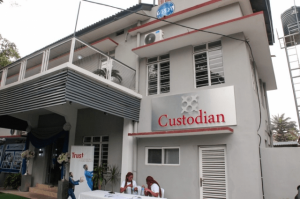South Africa has the highest youth unemployment rate in the world. This company wants to change that

After months of being ignored by recruiters in her home country of South Africa, the economics graduate began using a recruitment website called Giraffe. Compared to the experience of being “ghosted” by other recruiters, Zondani says getting guidance every step of the way was like “a breath of fresh air,” and she eventually landed a job with an insurance company.Zondani knows she is one of the lucky ones in the current economic climate. South Africa was already in recession and struggling with record-high unemployment before the pandemic. In 2019, it had the world’s highest youth unemployment rate, at 56%, and Covid-19 has led to even more job losses.But Giraffe believes it can help those hit the hardest: unskilled and less educated workers. Founded in 2015 by Anish Shivdasani and Shafin Anwarsha, Giraffe has automated the recruitment process, from sourcing candidates to screening them. Where jobseekers would usually apply for positions on paper or in person, they can now upload their résumé to the online platform, and an algorithm will match them with relevant jobs.Giraffe was built for mobile devices, which is how most South Africans primarily access the internet, explains Shivdasani. Smartphone penetration in the country has doubled from 2016 to 91% in 2019. Of those with internet access, around 60% use a mobile device.While other job portals and recruitment agencies often target high-skilled jobseekers, Shivdasani says Giraffe’s focus is primarily on entry to mid-level jobs.”We really target the mass segment of the market,” Shivdasani tells CNN Business. “We define it as salaries between 3,000 and 25,000 rand ($177 to $1,470) a month.”This income range represents about two-thirds of the total South African workforce, he adds.Shivdasani and Anwarsha met while working as strategy consultants in the telecoms industry. Shivdasani says he had always dreamed of building a platform to solve social problems in South Africa. In brainstorming where to start, he realized that unemployment was at the core of many of them. “We felt that unemployment is probably the biggest problem in South Africa,” he says.Giraffe is completely free for jobseekers, explains Shivdasani, and instead charges businesses to post jobs on its platform.It has worked with about 3,000 businesses and currently has one million jobseekers registered on its platform. Shivdasani estimates Giraffe reaches approximately 10 million jobseekers through partnerships with Facebook (FB) and Google (GOOG).Giraffe has even developed a voice note function that lets companies listen to applicants answering questions before inviting them to interview. “It’s a combination of matching, screening and voice clips, which sets us apart from other platforms,” Shivdasani says. This year the company received a grant from UNICEF, which it will use to build a content portal to arm jobseekers with career advice. Giraffe declined to disclose the amount of funding it received.South Africa’s structural challenges As South Africa slowly opens up from one of the world’s strictest lockdowns, unemployment is spiking and inequality is widening. A recent UNDP report estimates it will take at least five years to recover to pre-coronavirus levels of economic growth and employment.Vimal Ranchhod, an economics professor at the University of Cape Town, says skills development with the help of platforms like Giraffe is one way to assist young people.However, he cautions that it will be hard to address structural challenges in the labor market or education, many of which are tied to the country’s apartheid past. “Given the scale and nature of the problem, it requires a large-scale and long-term intervention from the government,” he says. “This does not mean that individual groups should not help if and when they can, because every little bit can help.”







